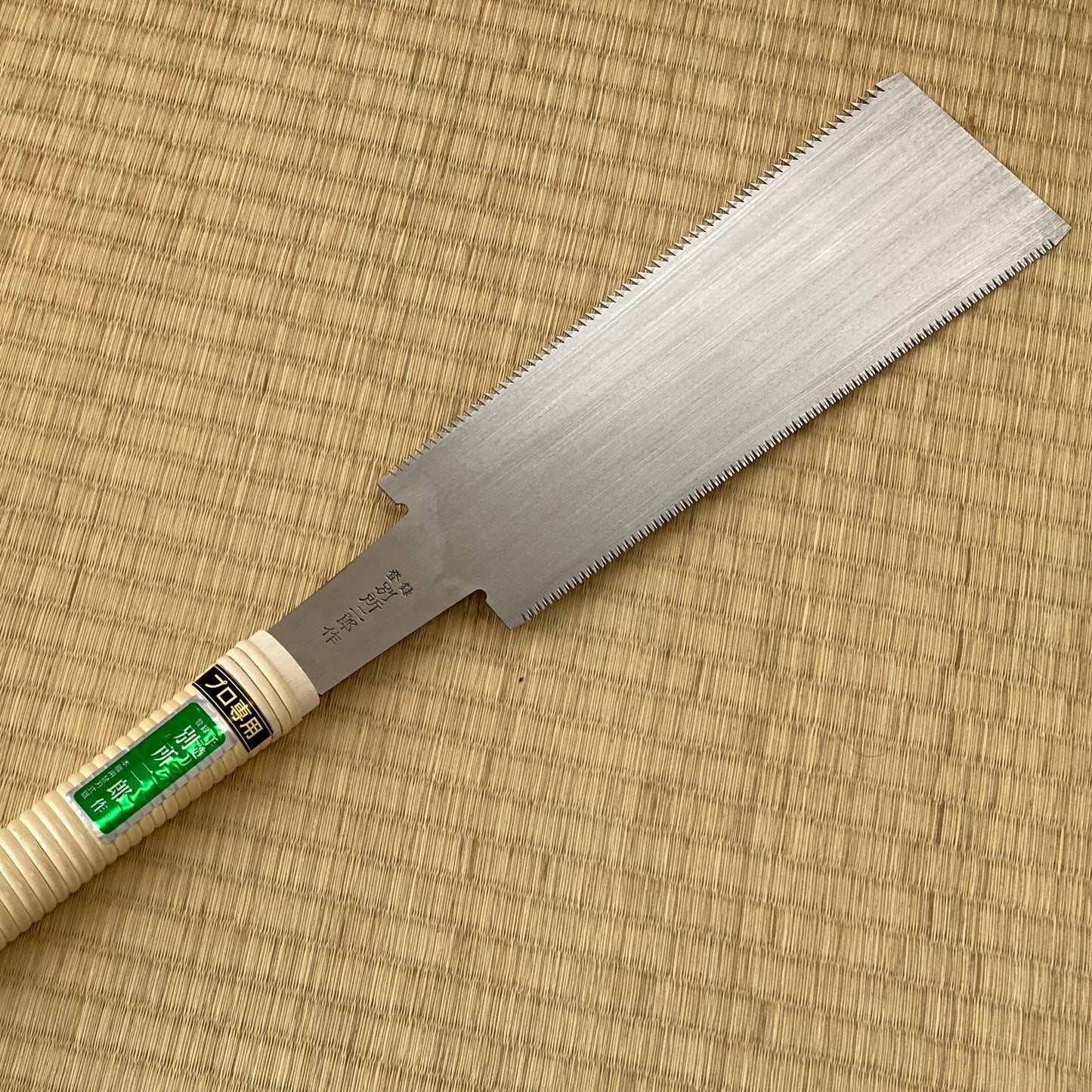Hishika
Jiro Bessho Ryoba - Precision Handmade Japanese Pull Saw
Jiro Bessho Ryoba - Precision Handmade Japanese Pull Saw
Couldn't load pickup availability
Overview
Ryoba are saws for general work and have rip teeth on one side of the blade and crosscut teeth on the other. Bessho Jiro's ryoba are handmade and have subtle differences that make the saw cut more precisely and easily: they are taper ground from the tang to the toe and from the blades to the center. The set of the teeth is also tapered, and the crosscut teeth have slightly less set than the rip teeth.
These details ensure that the user can make cuts faster and more accurately than with a typical machine made replaceable blade saw. This saw can also be resharpened, as the teeth are not impulse hardened.
Size Guide
If you had to pick only one saw: the 240mm is most versatile. It can be used from furniture scale to timber framing, and the teeth are fine enough to work well in hard wood. If you work primarily in hard wood, you may want to consider the Hardwood Kataba instead since it can both rip and crosscut.
If you are a timber framer or want to quickly resaw or dimension softwood: the 295mm cuts aggressively and quickly. However, it does not perform well in hardwoods and is too large for most fine work.
If you work mostly on furniture scale and prefer fine cuts over speed: the 180mm has a tooth almost as fine as machine made dozuki and leaves a smooth surface after cutting.
Please note: This saw should only be used with natural wood. Engineered wood products contain epoxies and glues that can damage the teeth.

Made Different
Handmade saws have qualities that mass produced saws do not
| Jiro Bessho Ryoba | Other Brands | |
|---|---|---|
| Hand Forged | ✓ | ✗ |
| Taper Ground | ✓ | ✗ |
| Hand Sharpened | ✓ | ✗ |
| Resharpenable | ✓ | ✗ |
| Replaceable Blade | ✓ | ✓ |
| Steel Type | Hand hardened white steel | Impulse hardened sheet steel |
